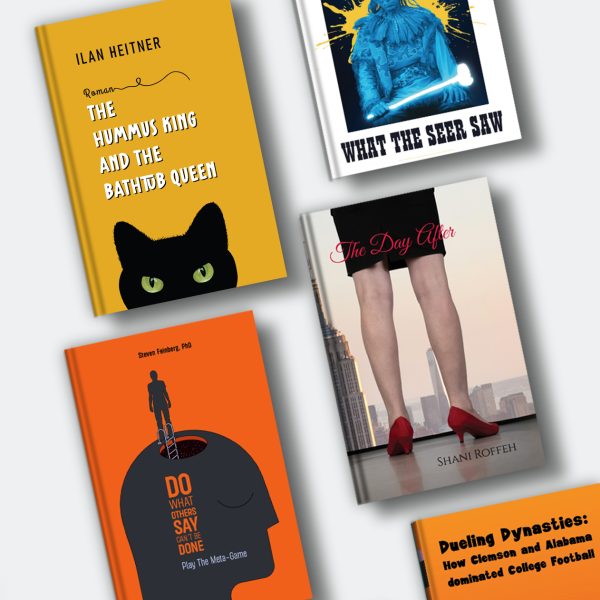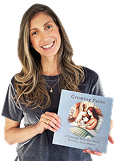Books are so much more than mere assemblages of words—they’re intricately engineered experiences, crafted to captivate, enlighten, and inspire. From that initial magnetic pull of the cover to the emotional closure of the last page, every element of a book is meticulously pieced together to play a crucial role in your journey through its pages. Whether you’re a writer, chiseling out your literary sculpture, a self-published maestro arranging the parts of a book in just the right order, or a reader eager to dissect the anatomy of beloved volumes, understanding the entire process—including the art of book printing—not only boosts your appreciation but also sharpens your literary tools. After all, how a book is printed, bound, and presented can make all the difference in bringing your vision to life.
Embark on this rollicking ride with us as we unpack every component of a book—from the eye-catching cover to the enlightening back matter—guiding you through how each segment threads together to craft a unified, gripping narrative experience. And don’t blink! Research shows that a potential book buyer typically decides whether to snag a book within the blink of an eye—approximately 13 seconds in-store and a mere 19 seconds online. That’s less time than it takes to tie your shoelace! So, every millisecond and every element of your book counts in making that blockbuster first impression!
The Cover: Judging a Book Before You Open It
We all know the saying, “Don’t judge a book by its cover,” but in reality, the cover is often the first impression a book makes. A well-designed cover can attract readers and convey the book’s genre and tone.
Front Cover
The front cover typically features the book’s title, subtitle, author’s name, and often illustrations or graphics that hint at the book’s content. The book’s title is crucial in attracting potential readers and establishing the genre and tone of the book. For fiction, it might set the mood, while for nonfiction, it clarifies the subject matter.
Dust Jacket
Found on hardcover books, the dust jacket serves both as protection and a marketing tool. It often includes a synopsis, reviews, and author information, making it a valuable piece of real estate for attracting readers.
Back Cover
This space usually features a compelling book blurb, author bio, and endorsements from other writers or critics. It’s designed to hook potential readers who are browsing in bookstores.
Spine
The spine might seem minor, but it’s critical for shelf visibility. It typically includes the book title, author’s name, and publisher’s logo, all formatted to catch a reader’s eye on a crowded shelf.
Front Matter: Setting the Stage
The front matter consists of all the pages before the main content begins. These pages set the tone, provide legal information, and give readers helpful context.
Title Page
This formal page presents the book title, subtitle, author’s name, and publisher information. It’s the book’s official introduction.
Half Title Page (Bastard Title Page)
A minimalist page featuring only the book’s title, it serves as a decorative pause before the title page.
Copyright Page
This essential page includes the copyright notice, edition number, ISBN, and legal disclaimers. It may also list permissions for copyrighted materials like song lyrics or illustrations.
Dedication Page
A space for authors to dedicate their work to loved ones, mentors, or even causes close to their hearts.
Acknowledgment Page
Here, authors express gratitude to those who contributed to the writing process—editors, family members, or experts.
Table of Contents
Especially vital for nonfiction books, this section lists chapters and sections to help readers navigate the content.
Foreword, Preface, and Introduction
- Foreword: Written by someone other than the author, it lends credibility. When both a foreword and preface are present, the foreword typically appears first.
- Preface: The author explains the book’s purpose or background.
- Introduction: Prepares readers for the journey ahead, offering context and insight.
The Body: Where the Story or Information Unfolds
The body is the heart of the book, containing the main story or the primary information.
In nonfiction books, the prologue can provide essential background information, setting the stage for the book’s subject matter. This introductory section often includes quotes or insights from experts, giving readers a glimpse into the main topics explored within the text.
Prologue
A prologue is a section that precedes the first chapter of a book, serving as a gateway to the main narrative. In fiction books, a prologue often sets the tone, introduces a key event, or creates a sense of mystery that hooks the reader from the outset. Imagine opening a thriller and being immediately drawn into a suspenseful scene that hints at the central conflict—this is the power of a well-crafted prologue.
In nonfiction books, a prologue can provide essential background information or context that enriches the reader’s understanding of the book’s subject matter. For instance, a historical nonfiction book might use a prologue to paint a vivid picture of the era being discussed, setting the stage for the detailed exploration that follows.
Whether it’s a few paragraphs or several pages long, a prologue can:
- Introduce a pivotal character or event
- Offer necessary background information
- Establish the book’s tone and atmosphere
- Create intrigue and anticipation
- Clarify the book’s purpose or theme
By effectively using a prologue, authors can draw readers into their world, making them eager to turn the page and delve deeper into the story or subject matter.
Chapters and Sections
In a fiction book, chapters guide the narrative, while in nonfiction, they organize information for clarity. Chapters divide the content into digestible pieces, keeping readers engaged.
Page Numbers and Headers
Page numbers and headers are essential for navigation. They help readers track their progress and quickly locate sections.
Illustrations, Tables, and Decorative Elements
In nonfiction, visuals clarify complex topics. In fiction, decorative illustrations or chapter headers enhance the reading experience.
Author’s Note
This optional section provides behind-the-scenes insights or clarifications, adding depth to the narrative.
Back Matter: Wrapping Things Up
The back matter contains supplementary material that enriches the reader’s experience and offers additional information.
Epilogue
Common in fiction, the epilogue wraps up loose ends or hints at future stories.
Afterword
Here, the author reflects on the writing process or updates readers on the book’s development.
Appendices and Supplementary Notes
Nonfiction books often include appendices to expand on complex topics or provide extra resources.
Glossary, Bibliography, and Reference List
Essential in nonfiction and academic works, these sections define terms, cite sources, and offer further reading.
Index
An index is an invaluable tool for readers, especially in nonfiction books, where it serves as a roadmap to the wealth of information contained within. Located at the back of the book, the index is an alphabetical list of keywords or phrases, each linked to the pages where those terms are discussed. This allows readers to quickly locate specific information without having to sift through all the pages.
In nonfiction books, an index can help readers find data, concepts, or topics of interest with ease. For example, a medical textbook might have an index listing various diseases, treatments, and symptoms, making it a quick reference guide for students and professionals alike.
Fiction books can also benefit from an index, particularly those with complex plots or extensive world-building. An index might list characters, locations, or significant events, helping readers keep track of intricate storylines.
Common uses of an index include:
- Assisting readers in finding specific information or data
- Providing a quick reference to key terms or concepts
- Listing characters, locations, or events in fiction books
- Organizing information for easy access
By including an index, authors enhance the usability of their book, making it a more valuable resource for readers.
Discussion Questions and Extras
Many books now include discussion guides or teasers for upcoming sequels to engage readers beyond the last page.
Optional and Overlooked Pages: Hidden Gems
Some parts of a book are often overlooked as readers skip them, but they still contribute to the reading experience.
Blank Pages
Used for design balance or printing logistics, blank pages give breathing space between sections.
Endpapers
Decorative or plain, these pages at the very beginning and end of a hardcover book add a touch of elegance.
Colophon
A small section in the back matter that shares details about the book’s design, typeface, and production.
Promotional Pages
Many books, especially in a series, include sneak peeks of the next installment or other works by the author.
Author Bio
An author bio is more than just a brief description of the writer; it’s a vital component that helps establish the author’s credibility and connect with readers on a personal level. Typically found at the back of the book, the author bio provides context about the author’s background, experience, and expertise.
A well-crafted author bio might include:
- The author’s education and qualifications
- Relevant experience and expertise in the book’s subject matter
- Previous publications or notable awards
- Personal interests or hobbies that add a human touch
For instance, in a nonfiction book about environmental conservation, the author’s bio might highlight the author’s academic background in environmental science, their work with conservation organizations, and any related publications. This not only establishes the author’s authority on the topic but also builds trust with the reader.
In fiction books, the author bio can offer insights into the author’s inspirations and writing process, creating a deeper connection with the audience. Readers often enjoy learning about the person behind the story, and a compelling author bio can enhance their overall reading experience.
By providing a glimpse into the author’s life and credentials, the author bio enriches the reader’s understanding and appreciation of the book, making it an essential part of the complete reading experience.
Conclusion: Crafting a Complete Reading Experience
A book is far more than just its story or information—it’s a carefully crafted experience. Every part, from the title page to the back cover, plays a vital role in how readers engage with the content. Writers can use these sections strategically to build anticipation, deepen the narrative, or create a personal connection with the audience. Readers, in turn, can develop a deeper appreciation for the thoughtful details that enhance their reading journey.
Whether you’re an author bringing your vision to life or a reader exploring new worlds, understanding the essential parts of a book enriches the overall experience. Every element, no matter how small, contributes to the book’s ability to captivate, inform, and inspire.
If you’ve completed your manuscript and are ready to share it with the world, Spines is here to help you take the next step. Your book is set to transcend the ordinary and thrive in the new era of publishing. Don’t let your hard work go unnoticed—sign up for free today and start your self-publishing journey. Your story deserves to be told, and we’re here to help you share it with the world.
Your Publishing Journey Awaits – Start NowFAQs – Parts of a Book
Q: What is the glossary of a book?
A glossary in a book is a specialized alphabetical list of terms located at the end of a book. It includes definitions or explanations of important words and phrases used within the text. The glossary is particularly useful in academic, technical, or topic-specific texts, helping readers understand complex or specialized language.
Q: What is the bind of a book called?
The bind of a book is commonly referred to as the “binding.” This is the physical method used to assemble the book’s pages and cover. Common types of bindings include perfect binding (used in paperback books), saddle-stitch binding (common in brochures and smaller booklets), and hardcover binding, which offers durability and an attractive appearance for longer-lasting books.
Q: What is the anatomy of a book?
The anatomy of a book refers to the various parts that make up the physical structure of the book. Key components include the cover (front and back), spine, pages, and various elements within the pages such as the foreword, table of contents, chapters, glossary, and index. Each part plays a role in the book’s usability and aesthetics.
Q: How is a book organized?
Books are typically organized into a front matter, body, and back matter. The front matter might include a title page, dedication, and table of contents. The body contains the core content divided into chapters or sections. The back matter can include a glossary, bibliography, and index. This structure helps guide the reader through the information in a logical and coherent manner.
Q: What is the backbone of a book called?
The backbone of a book is called the “spine.” This part of the book connects the front and back covers and is typically where the book’s title, author’s name, and sometimes the publisher’s information are printed. It is crucial for bookshelf display and recognition.
Q: What are the physical features of a book?
The physical features of a book include its cover (hardcover or softcover), spine, margin, gutter (the inner margins where the pages are bound together), and the quality of paper used for the pages. Each feature contributes to the book’s durability, readability, and overall presentation.








